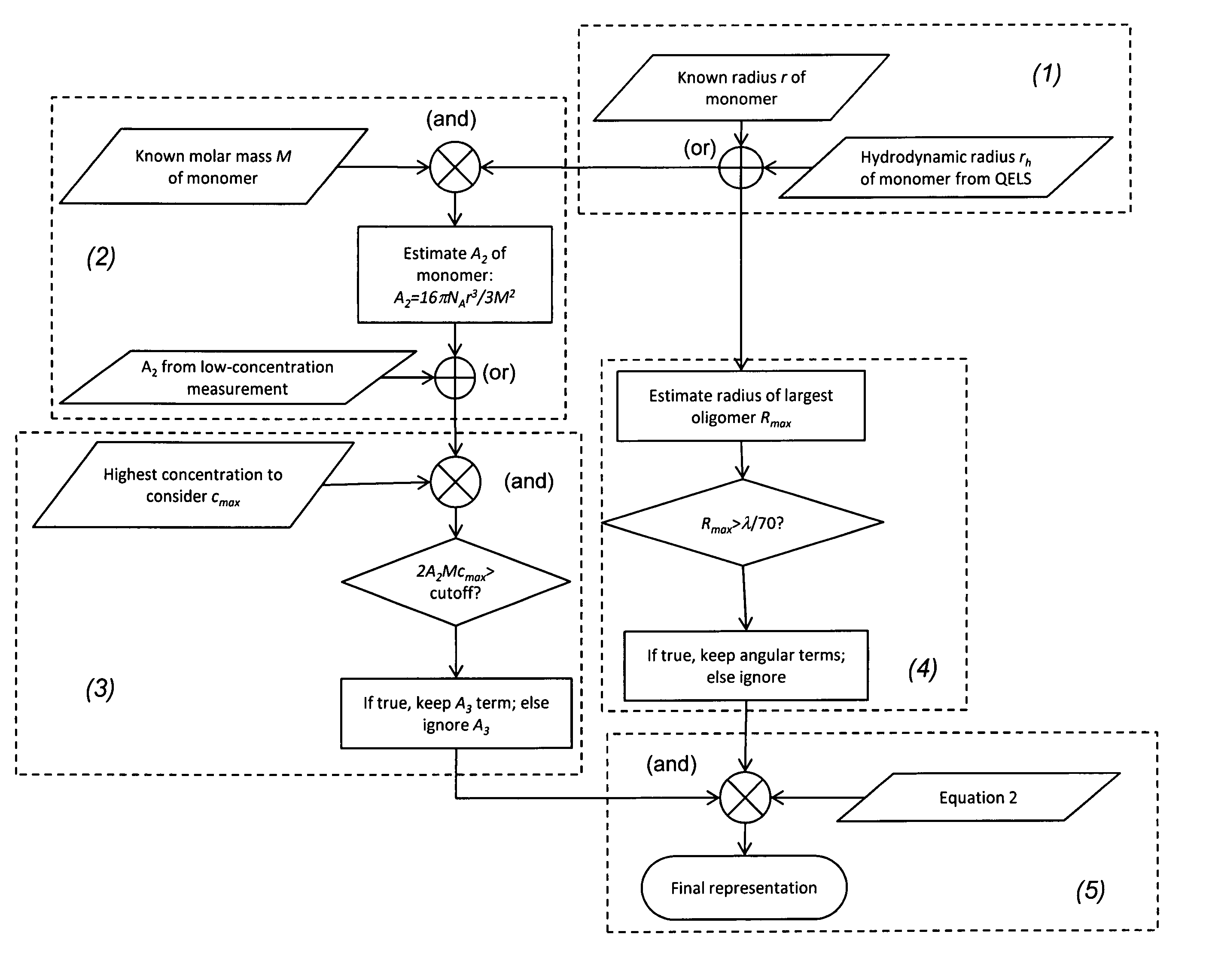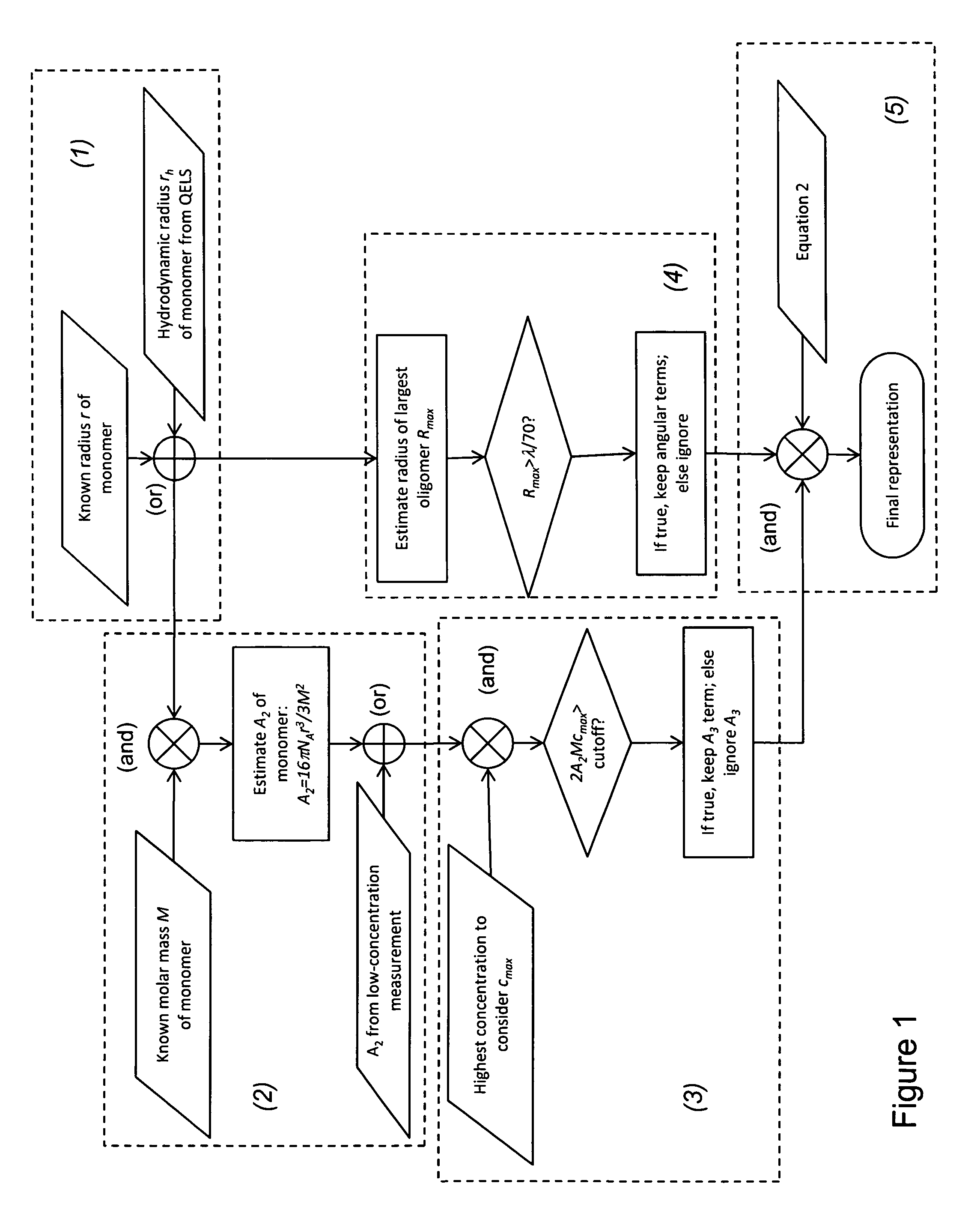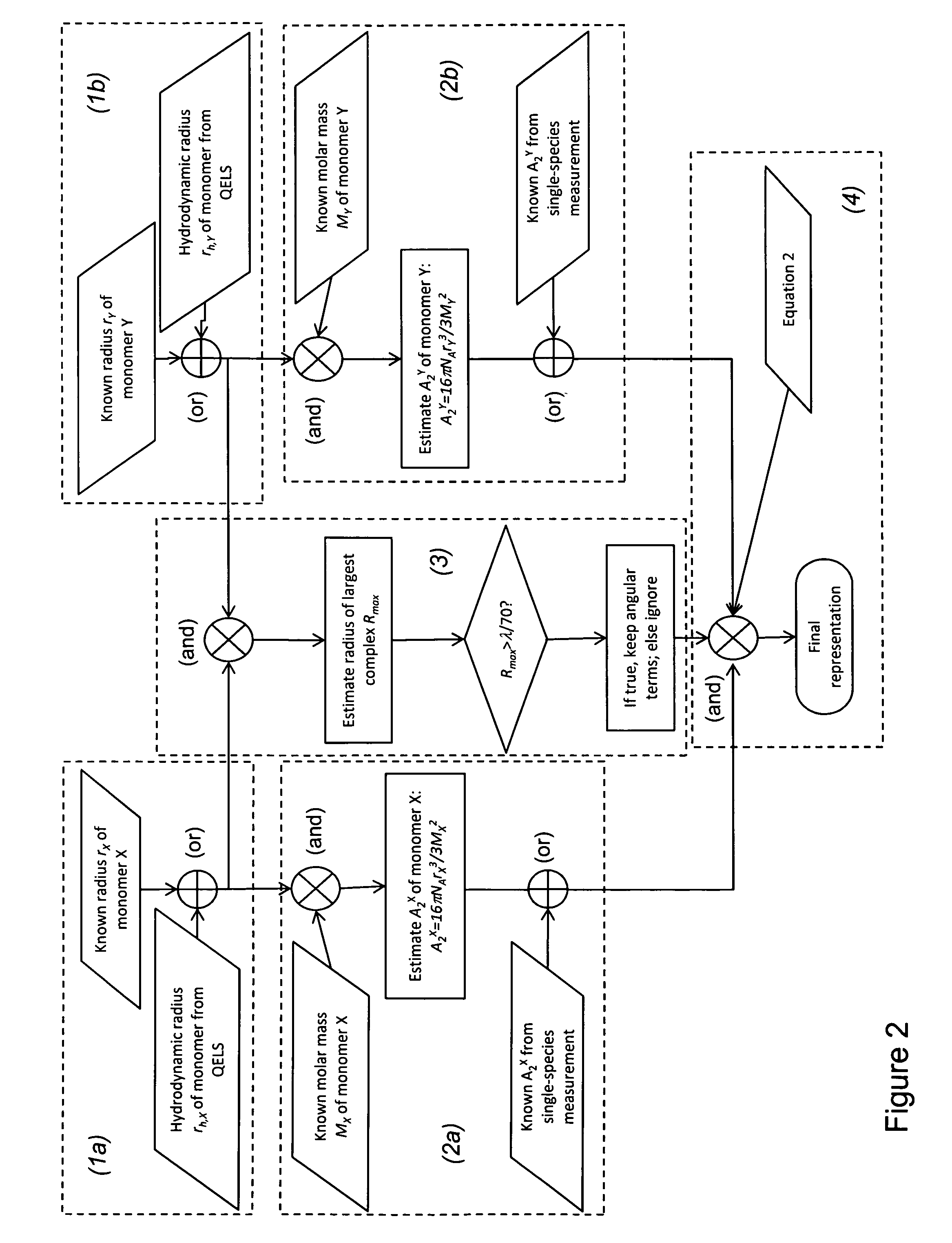Method for characterizing reversible association of macromolecules at high concentration
a macromolecule and high concentration technology, applied in chemical methods analysis, instruments, material analysis, etc., can solve the problems of oligomeric forms of antibodies that may present an increased immunogenic risk, adversely affecting the manufacture and delivery of therapeutics containing these antibodies, and deviation from equilibrium
- Summary
- Abstract
- Description
- Claims
- Application Information
AI Technical Summary
Benefits of technology
Problems solved by technology
Method used
Image
Examples
Embodiment Construction
[0013]Theoretical Description
[0014]The result of a generalized fluctuation theory for multi-component static light scattering, assuming that the incident light is vertically plane polarized and the observation is made in the horizontal plane at an angle θ relative to the direction of the incident light, is:
[0015]R(cX,θ)K=∑m,n{Ψm,n(θ)cnMmQ1,m,n(θ)ψm,n(θ)(ⅆnⅆcm)(ⅆnⅆcn)}.(1)
[0016]Here R(cX, θ) represents the excess Rayleigh ratio detected at any scattering angle from a solution of macromolecules at a composition cX, where X represents the various monomeric species and cX represents the totality of weight / volume concentrations [c1, c2, c3 . . . ] of each species; the excess Rayleigh ratio is the difference between the Rayleigh ratio of the solution and that of the pure solvent; the Rayleigh ratio of a solution is
[0017]Irs2Iv;
I is the intensity of scattered light per unit solid angle observed at a distance rs from the point of scattering due to an incident intensity I; v is the...
PUM
 Login to View More
Login to View More Abstract
Description
Claims
Application Information
 Login to View More
Login to View More - R&D
- Intellectual Property
- Life Sciences
- Materials
- Tech Scout
- Unparalleled Data Quality
- Higher Quality Content
- 60% Fewer Hallucinations
Browse by: Latest US Patents, China's latest patents, Technical Efficacy Thesaurus, Application Domain, Technology Topic, Popular Technical Reports.
© 2025 PatSnap. All rights reserved.Legal|Privacy policy|Modern Slavery Act Transparency Statement|Sitemap|About US| Contact US: help@patsnap.com



